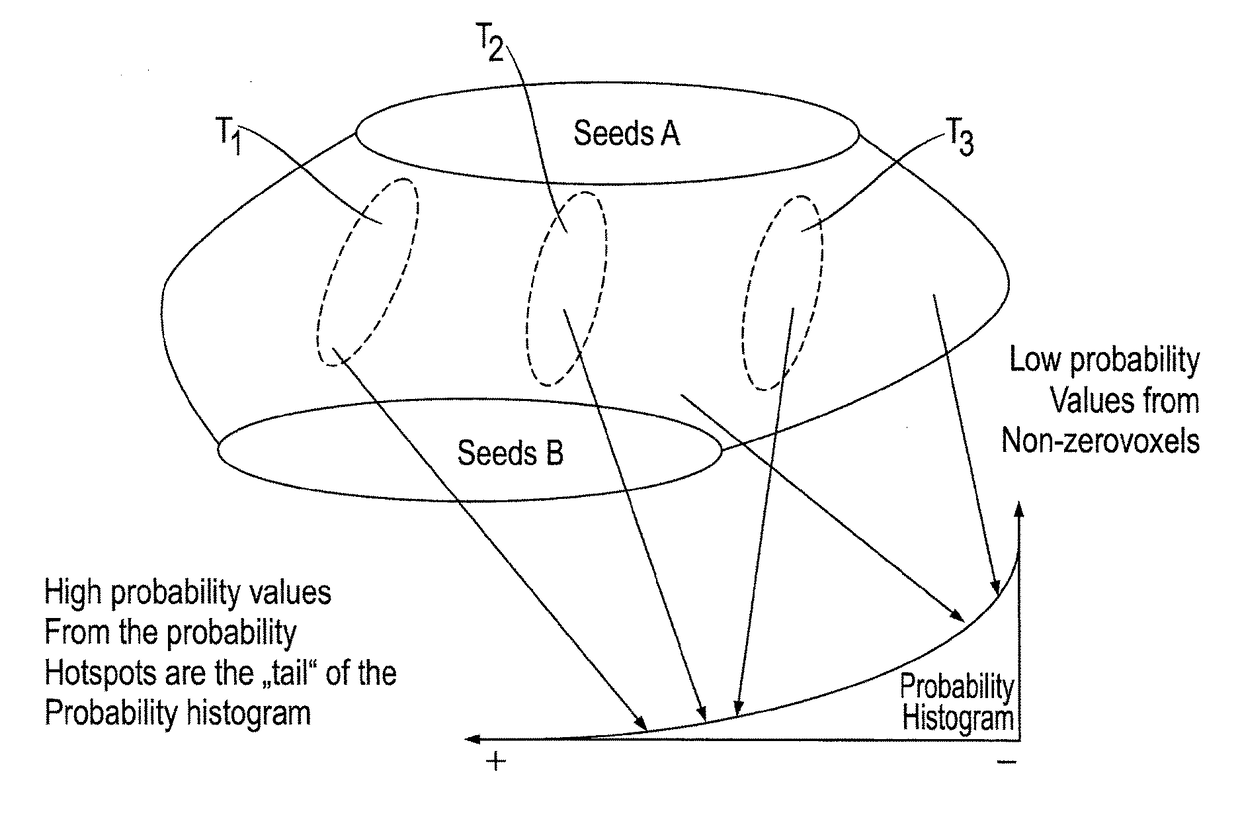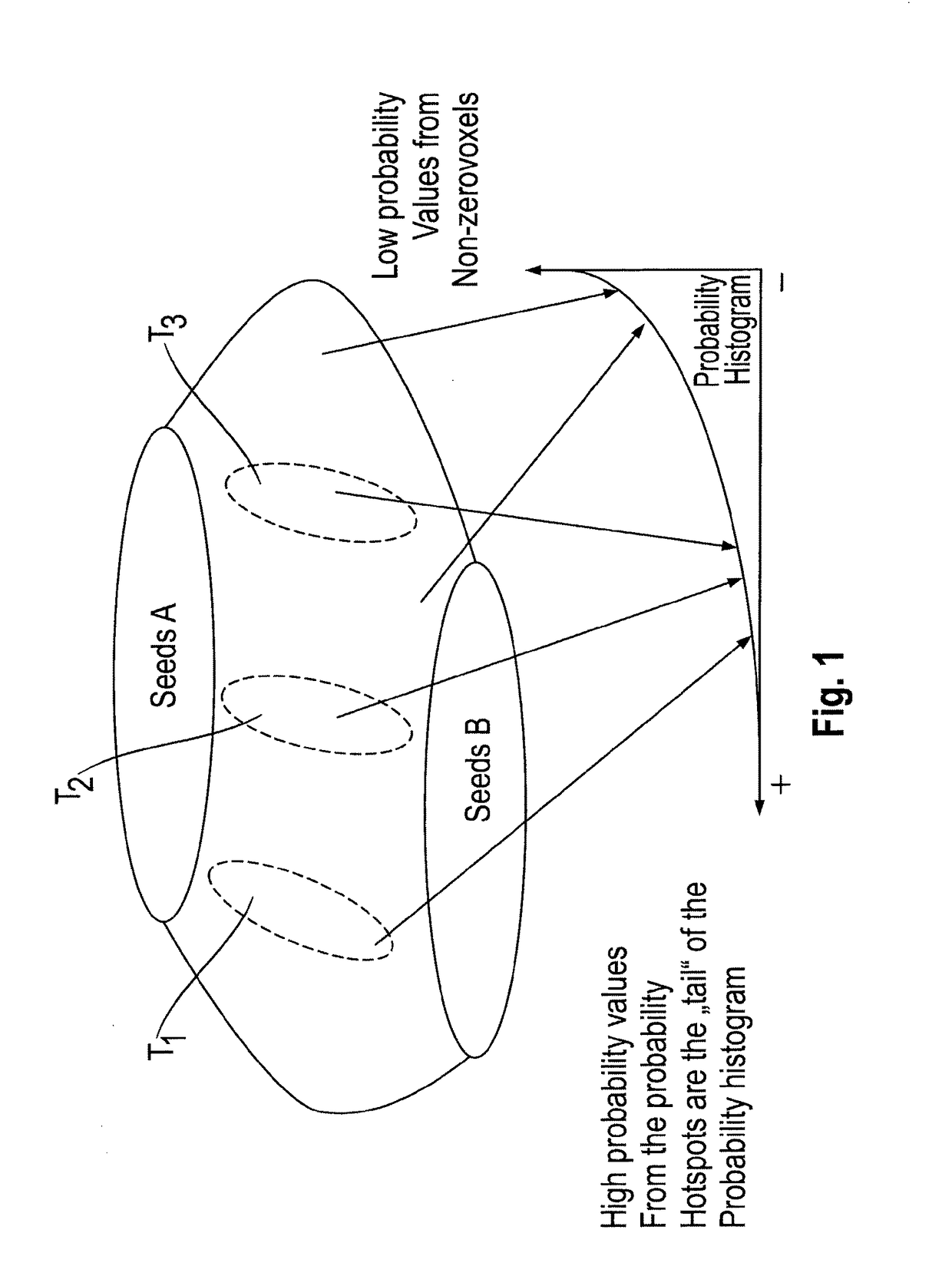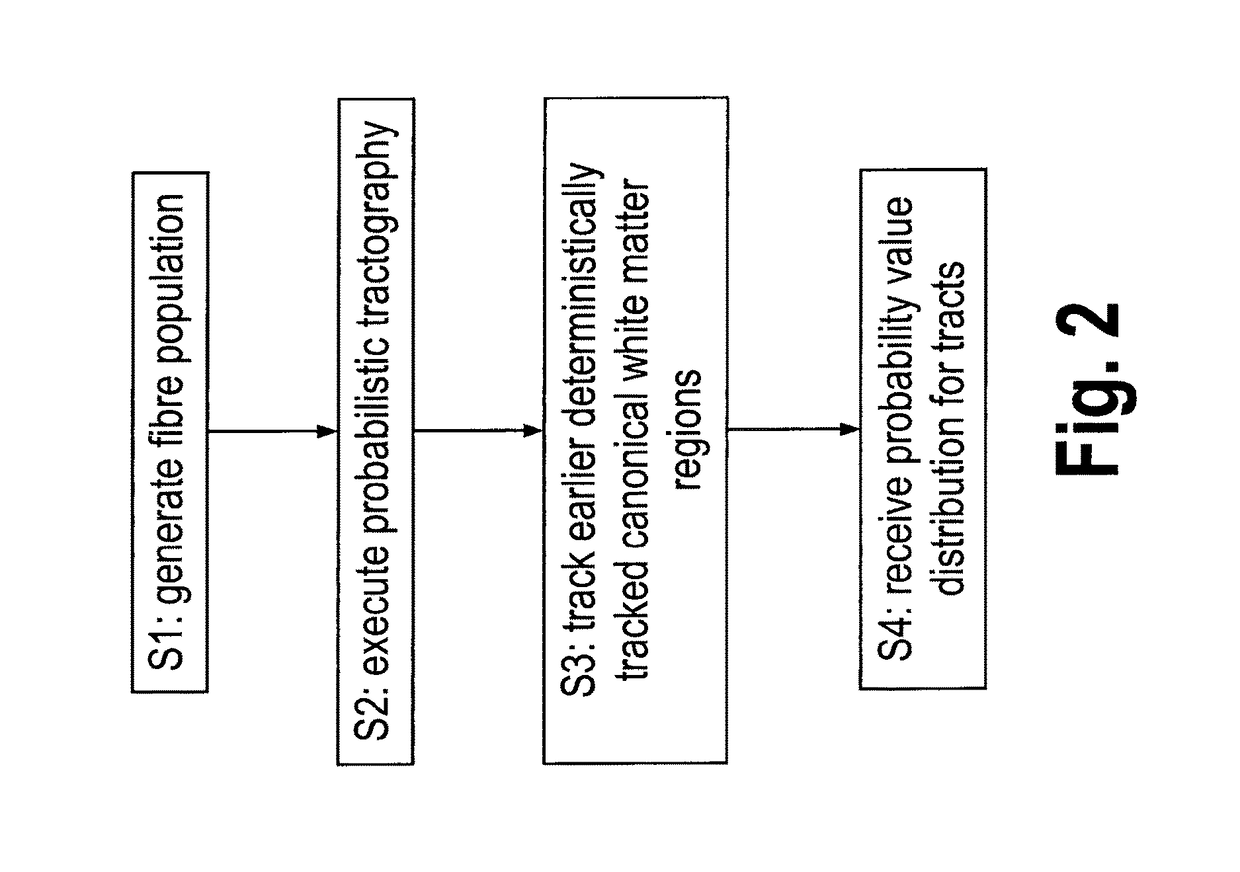Auto-calibration of probabilistic tracking parameters for dti fibre tractography and compilation of tract probability comparison scales
a technology of probabilistic tracking parameters and dti fibre, which is applied in the direction of instruments, image enhancement, and measurement using nmr, can solve the problems of clinical interpretation (differing whether there is a fibre or not) and the inability to provide real advantages, and the software packages that perform probabilistic tractography are not availabl
- Summary
- Abstract
- Description
- Claims
- Application Information
AI Technical Summary
Benefits of technology
Problems solved by technology
Method used
Image
Examples
embodiment b
[0068]The method follows this routine:[0069]The DTI data is pre-processed so as to result in a tensor, glyph or other representation of the white matter directionality on voxel level, for this there is a Universal Atlas Registration where the Atlas is multi-modally fused with multiple datasets and anatomical information from T1-like MR scans is combined with the DTI data itself by means of an elastic image fusion inverting the EPI-style geometric distortions present in the DTI-sequence, to optimally match the fine tissue information of the T1 image onto the DTI tensor workspace.[0070]From the elastic fusion with the universal atlas areas, objects, surfaces and seed points stored in the Universal Atlas are transferred into the dataset, post-processing steps might be activated at this point that refine the image segmentation further.[0071]A tissue class segmentation is performed in the patient dataset to identify which parts of the image are white matter, again through the multiple re...
PUM
 Login to View More
Login to View More Abstract
Description
Claims
Application Information
 Login to View More
Login to View More - R&D
- Intellectual Property
- Life Sciences
- Materials
- Tech Scout
- Unparalleled Data Quality
- Higher Quality Content
- 60% Fewer Hallucinations
Browse by: Latest US Patents, China's latest patents, Technical Efficacy Thesaurus, Application Domain, Technology Topic, Popular Technical Reports.
© 2025 PatSnap. All rights reserved.Legal|Privacy policy|Modern Slavery Act Transparency Statement|Sitemap|About US| Contact US: help@patsnap.com



